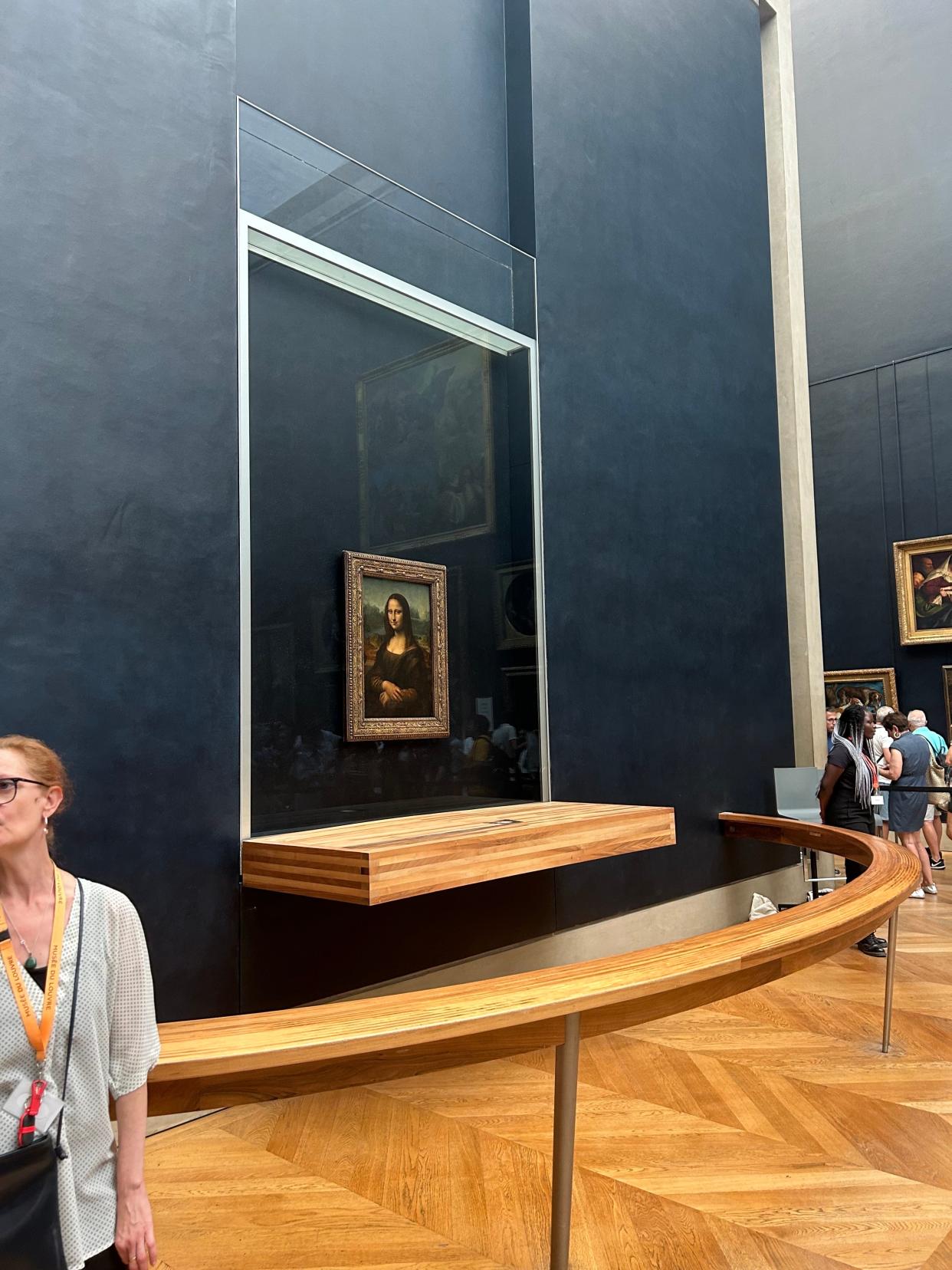The Mona Lisa — a famously disappointing experience to view — is a cautionary tale about how tourist vandalism can make cultural heritage less accessible and enjoyable, legal expert says

Italy is bearing the brunt of unruly tourists vandalizing historical sites this summer.
The trend could end up making cultural heritage sites less accessible, a legal expert told Insider.
On a smaller scale, the Mona Lisa was locked away behind bulletproof glass because of vandalism.
Amid a horde of eager tourists and a string of vandals, Italy's vast collection of monuments is proving to be both a blessing and a curse.
This summer, two tourists have been caught defacing Rome's ancient Colosseum — one of Italy's most popular tourist destinations — highlighting how difficult it is to protect heritage sites amid mass tourism. In Italy, in particular this summer, many tourists have arrived with a lawless mentality that cultural heritage sites, such as ancient monuments and storied artwork, are a playground.
"I think people kind of get captured in that fantasy of Italy, which isn't really accurate," Leila Amineddoleh, a lawyer specializing in cultural heritage for Amineddoleh & Associates LLC, told Insider. "You can't jump in the fountain like in 'La Dolce Vita,' you will be fined for that behavior."
In July, a fitness instructor based in the UK was filmed carving his and his partner's names into the Colosseum. Days later, a Swiss teenager carved her initials into the monument. Both could face up to $16,000 and five years in prison.
And with the post-pandemic trend of "revenge travel", referring to cooped-up passengers traveling in hordes after the pandemic, still ongoing, Italy has been one of the most popular tourist destinations. As European countries loosened COVID restrictions and regulations, European airports saw a 250% increase in arrivals by mid-2022, according to data sourced from Airports Council International, a group representing European airports. Italy, Spain, and Greece are among the most visited this summer, expecting to have record-breaking tourism seasons, per The Wall Street Journal.
Elsewhere, the trend has led to famous works of art, such as the Mona Lisa, being made less accessible — which ultimately dampens the experience of seeing art, Amineddoleh told Insider. Countries with UNESCO World Heritage sites spend public funds on protective measures and archaeological ventures. But vandalism forces those same host countries to spend money on security measures with that funding.
"I don't think anyone wants an experience where they visit the coliseum and every 40 feet is a guard," Amineddoleh said. "It's really difficult for people who work in cultural heritage and in tourism to find that right balance between protecting objects but not destroying the experience."
Amineddoleh said that the Mona Lisa was an example of how on a smaller scale, art can become less accessible or enjoyable when targeted by vandals using cake, spray paint, or rocks, something the Mona Lisa has dealt with for over a hundred years, according to ArtNet.
The painting is now locked behind bulletproof glass in Paris' Louvre museum, with a barrier keeping people away as well. The end result is an unpleasant, crowded funnel of tourists clamoring to get a glimpse of the painting, which is now also accentuated by lights glaring off the glass encasing.
Amineddoleh said people in her field do not want to see those kinds of major security measures imposed at historic sites.
"We want people to be able to walk in and experience those sites and really connect, and to learn about history and perhaps feel in some way transported to another place," Amineddoleh said.
Read the original article on Insider

